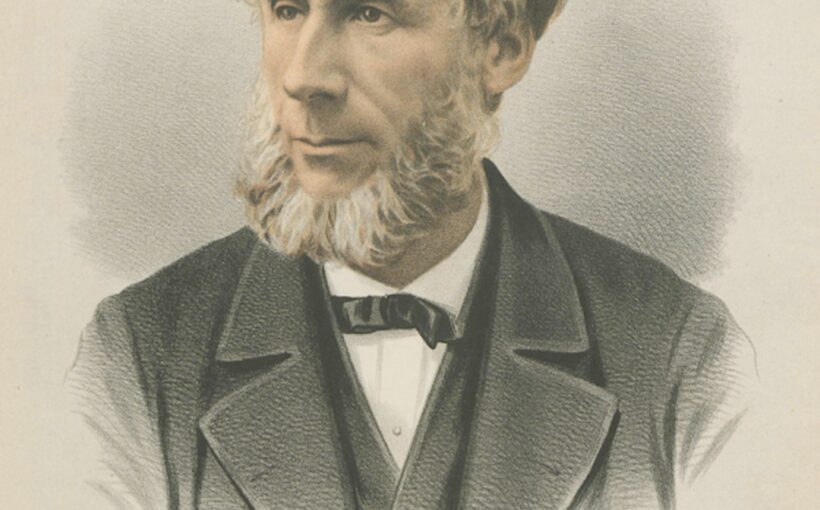We have grown so used to many things. To the pictures of wildfires and cremated animals, to the ice sheets calving into the ocean, to the promises of world leaders that they will heed the “last chance” warning of the scientists.
It’s hard for anyone under the age of 40 to remember a time when carbon dioxide build-up, whether it was “the greenhouse effect”, or “global warming” or “climate change” or now “climate crisis”, wasn’t in the news.
The long hot summer of 1988 – 35 years ago – is held as the moment that world leaders began to mouth the right pieties.
Presidential candidate (and soon to be president) George H.W. Bush said he would use the “White House effect” to fix the Greenhouse Effect (he didn’t). UK prime minister Margaret Thatcher warned of a giant experiment being conducted “with the system of this planet itself”.
Thirty-five years. But it was actually 35 years before that – fully 70 years ago this month – that the danger of carbon dioxide build-up in the atmosphere first travelled around the world.
That carbon dioxide trapped heat was uncontroversial. Irish scientist John Tyndall (possibly drawing on the work of an American, Eunice Foote) had shown that it did back in the mid-1800s.
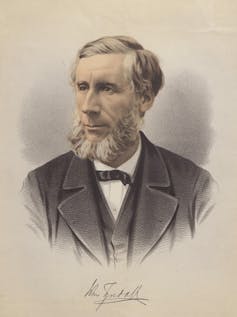
In 1895, Swedish Nobel prize winner Svante Arrhenius had suggested that – over hundreds of years – the build-up of carbon dioxide released when humans burn oil, coal and gas might trap so much heat as to melt the tundra and make freezing winters a thing of the past.
His work was challenged, but the idea occasionally popped up in popular journals. In 1938 English steam engineer Guy Callendar suggested to the Royal Society in London that warming was underway.
But it was in early May, 1953, at a meeting of the American Geophysical Union, that Canadian physicist Gilbert Plass – who had been corresponding with Callendar – told the gathered scientists that trouble was afoot.
Plass said that:
The large increase in industrial activity during the present century is discharging so much carbon dioxide into the atmosphere that the average temperature is rising at the rate of 1.5 degrees per century.
This got picked up by the Associated Press and other wire services and appeared in newspapers all around the world (even as far afield as the Sydney Morning Herald). Plass’s warning also popped up in Newsweek on May 18 and in Time on May 25.
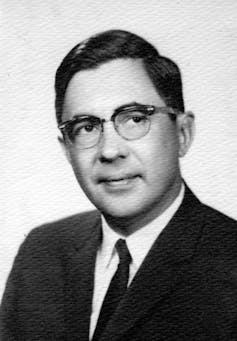
The fact that the world was warming was already uncontroversial among scientists. But the emphatic connection with carbon dioxide made by Plass, as opposed to competing theories such as orbital wobbles or sunspot activity, was newsworthy.
Plass had become interested in the question of carbon dioxide buildup while working for the Ford Motor Company. He looked at how carbon dioxide actually functions in the real world, not just at sea level (without getting too technical. Many scientists had dismissed Arrhenius’s earlier work on the basis of false confidence that carbon dioxide worked the same there as in the stratosphere).
Plass kept working on the issue, with technical and popular publications through the rest of the 1950s. In 1956, he had an academic article on “the carbon dioxide theory of climate change” published in the Swedish scientific journal Tellus, and also a popular article in the American Scientist. And he was present at the first major meetings to discuss carbon dioxide build up.
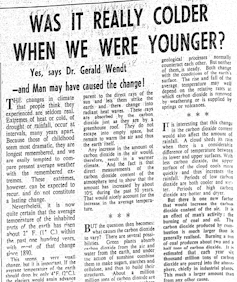
Meanwhile, the carbon dioxide theory started getting more coverage among science journalists. One, George Wendt, wrote up the findings in the then well-regarded UNESCO Courier, and this got excerpted in the Irish Times in 1954, the same year that British journalists started mentioning it.
In 1957 the then-new magazine New Scientist mentioned it. By the end of the 1950s, anyone who read a newspaper could have been aware of the basic idea.
Throughout the 50s and 60s US, Swedish, German and Soviet scientists were examining the issue. In 1965 President Lyndon Johnson even namechecked carbon dioxide build-up in an address to Congress.
By the end of the 1960s international collaboration was beginning, though there was caution still. For instance, in April 1969 the American scientist Charles Keeling, who had been measuring atmospheric carbon dioxide concentrations at a Hawaiian observatory, revealed that he had been asked to change the title of a lecture from, “If carbon dioxide from fossil fuels is changing man’s environment, what will we do about it?” to “Is carbon dioxide from fossil fuel changing man’s environment?”
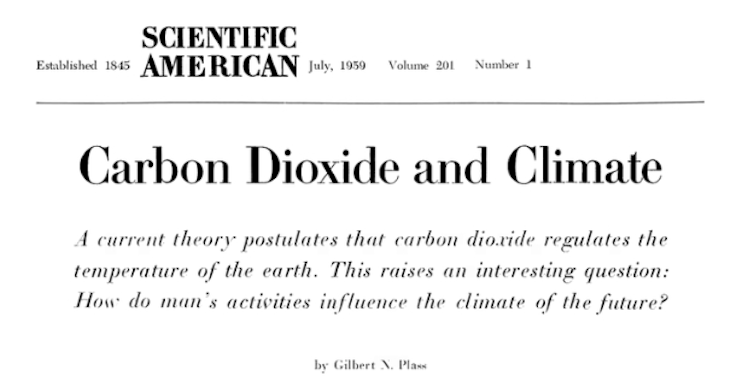
For climate historians like me, the 1970s are a fascinating period of intense measurement, modelling, observation and thinking which, by the end of the decade, produced a working consensus that there was serious trouble ahead. In effect, Plass had nailed it.
When Plass spoke out, the atmospheric concentration of carbon dioxide was at about 310 parts per million. Today, they’re 423 or so. Every year, as we burn more oil, coal and gas, the concentration climbs and more heat is trapped.
By the time Plass’s warning is 100 years old, the concentrations will be much higher. There’s a very good chance we will have gone over the 2°C warming level that used to be regarded as “safe”.

Don’t have time to read about climate change as much as you’d like?
Get a weekly roundup in your inbox instead. Every Wednesday, The Conversation’s environment editor writes Imagine, a short email that goes a little deeper into just one climate issue. Join the 10,000+ readers who’ve subscribed so far.
![]()
Marc Hudson runs a website called All Our Yesterdays, allouryesterdays.info, with daily blog posts about events that happened 'on this day', around climate science, politics, technology and protest.
